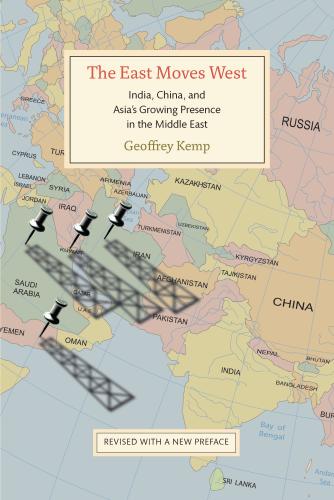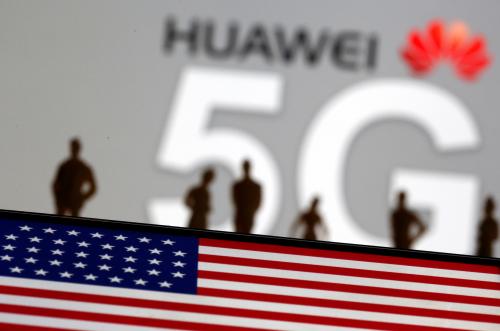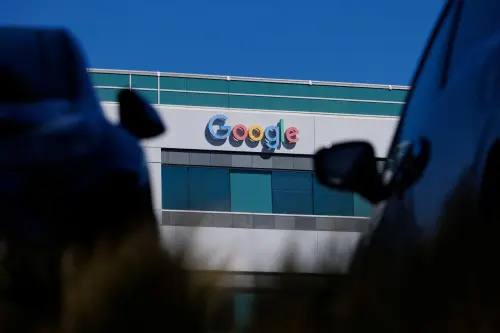Content from the Brookings Institution India Center is now archived. After seven years of an impactful partnership, as of September 11, 2020, Brookings India is now the Centre for Social and Economic Progress, an independent public policy institution based in India.
In meetings in various international capitals this summer—from a gathering of defense ministers in Singapore to a meeting of economic policy heavyweights and CEOs in Paris—discussions frequently revolved around the impact of technology. Of course, technological developments have long had implications for the global economy and international security, whether the advent of gunpowder or the railways, or the mastery of radio or nuclear fission. But with the “return of history” we may also be witnessing a return—after an anomalous period of positive-sum progress—of the geopolitics of technology. The scale and speed of this technological change makes it difficult to completely internalize the opportunities and challenges that lie ahead for the world’s major powers.
Essentially, different approaches to technological development, and specifically the use of data, threaten to divide the world and shape the contours of geopolitical competition, contributing further to the securitization of technological competition. Instead of a “clash of civilizations,” we could be in for a “clash of automations.”
The iPhone era
The past two to three decades may well have been an aberration. They were marked by an acceleration of globalization: the faster, cheaper, and more efficient flow of goods, people, capital, information, and energy. This period witnessed rapid advances in broadband and satellite telecommunications, accelerated microprocessor speeds, more efficient energy use, the evolution of global financial markets, and the dispersal of manufacturing supply chains. The apotheosis of this world was the iPhone.
But there was an inherent compromise at the heart of the iPhone era of globalization. The United States and other advanced economies remained world leaders in innovation, deriving benefits from the resulting intellectual property and their marketing power. Meanwhile, actual manufacturing of these products shifted to lower income countries, notably China, and also parts of East and Southeast Asia. Lower cost services—software development, research, and back-end work—were outsourced to places like India. The global economy grew and everyone benefited, even if some—such as China, the United States, and India—benefited more than others.
The next wave of technologies
But the new era of technologies, many of which are already emerging, may not simply build upon these developments—rather, in counterintuitive ways they may in fact undermine the globalizing effects of earlier breakthroughs. To date, many new developments are simply buzzwords to most consumers, so it is important to break down what the new set of technological developments will encompass. They can be grouped into six broad areas. The combinations of these technologies may well form the basis of what some have described as the Fourth Industrial Revolution.
- Computing and storage, both of which will increasingly migrate to remote servers (the “cloud”), bringing down the cost and increase the scale of data storage. This could have potential implications for security and communications, especially features such as distributed record-keeping (blockchain) and new developments in data storage.
- Telecommunications, specifically the developments of a fifth generation (5G) of infrastructure, which may operate up to 20 times faster than existing systems, with low latency (delay in data communication). This will enable a vast array of applications, including driverless cars and machine-to-machine communications.
- Artificial intelligence, specifically machine learning, which involves fast and accurate pattern recognition by feeding vast troves of data to computers in order to “teach” them. This can then be applied to language, visual imagery, and other domains to resemble a form of intelligence.
- Automation, including the online integration of physical objects: cyber physical systems (CPS) or the “internet of things” (IoT). Think health monitors, remotely-managed factory robots, or internet-enabled security systems.
- Manufacturing, including in materials, optics, sensors, and additive manufacturing (“3D printing”).
- Energy, particularly renewable and mobile energy sources and smarter management systems.
When combined, these changes are already beginning to affect every aspect of globalization. The emerging sectors in which this will be felt directly by consumers include social media for information, financial technologies (“fintech” e.g. digital payments) for capital flows, e-commerce (both wholesale and retail) for goods trade, e-services (including peer-to-peer businesses, automation, and digital identification) affecting mobility and social services, and changes to the sourcing and management of energy. Most “unicorns”—start-ups valued at over $1 billion—would fall in one or more of these domains. Consider QQ, Stripe, Rakuten, Oyo, or Tesla. Today’s tech giants are already investing heavily in future technologies from which start-ups are benefiting: Google in machine learning, Samsung in 5G, Amazon and Alibaba in automation, and so forth.
Three approaches to data
Underlying most—although not all—of these changes will be a simple philosophical choice: Who will own, control, and manage users’ data? Access to data will ultimately determine the quality of products and market share. Decisions on whether private companies, the state, or users themselves have ownership over individuals’ data will have tremendous implications for the future of the global economy and for geopolitics.
Broadly, three different approaches to this issue have emerged. In the United States, major companies like Facebook, Netflix, Google, and Amazon retain access to vast amounts of consumers’ data which they have successfully monetized. This reflects a culture in which private sector-led innovation predominates, with a focus on research and development, design, and marketing. This model has allowed the U.S. tech sector to retain its international competitiveness (the five most valuable publicly traded companies today are U.S.-based tech firms), although often at the expense of consumer rights and privacy.
A second model is embodied by the European Union, in which citizen and consumer rights are given priority, even at the cost of companies’ competitiveness. The European Union’s General Data Protection Regulation (GDPR), which gives individuals control of their personal data, best captures this ethos.
The biggest change, however, is the emergence of a third model in China, defined by a form of state-backed technological competition in which the government has greater access to citizens’ data. When combined with a protected market and significant financial resources, Chinese firms such as Huawei, Tencent, Alibaba, ZTE, and Xiaomi are now able to compete with U.S. and European tech giants. In certain areas, digital payments and 5G, Chinese firms have surged ahead of competitors from other countries.
Although all three models reflect a tendency to promote national champions—based on the comparative advantages of U.S., European, and Chinese societies—the dynamics that underpinned the iPhone phase of globalization is fraying. The likely outcome is a more fractured and competitive technological landscape. This could well mark the emergence of what one European economist recently called the “Huawei phase” of globalization: a phase that could in fact witness globalization’s retreat.
The Re-Securitization of Technology
The geopolitics of these emerging technological developments are already being felt. China continues to project the benefits of its model. Beijing is no longer content to restrict it to its own territory: For the continuing success of a firm like Huawei, it will have to be able to compete in the global marketplace.
This is resulting in a backlash. Europe is opting to double down on its approach, and regulate tech companies into submission. By contrast, the United States has adopted a more confrontational attitude, including cracking down on exports of technology in 14 critical areas. 5G telecommunications—an area in which U.S. firms are non-competitive—has become a priority political issue for the White House, which has explicitly targeted Chinese companies such as Huawei. This is motivated less by concerns about spying, but rather by the belief that 5G will soon underwrite a wide array of critical infrastructure—port management, transportation fleets, and electrical grids. Consequently, giving a foreign state-backed company access to the backbone of one’s economy is a non-starter. Other countries, such as Japan and Australia, have reached similar conclusions. As these decisions are already making clear, the re-securitization of technology is underway.
The Brookings Institution is committed to quality, independence, and impact.
We are supported by a diverse array of funders. In line with our values and policies, each Brookings publication represents the sole views of its author(s).










Commentary
From the iPhone to Huawei: The new geopolitics of technology
July 31, 2019